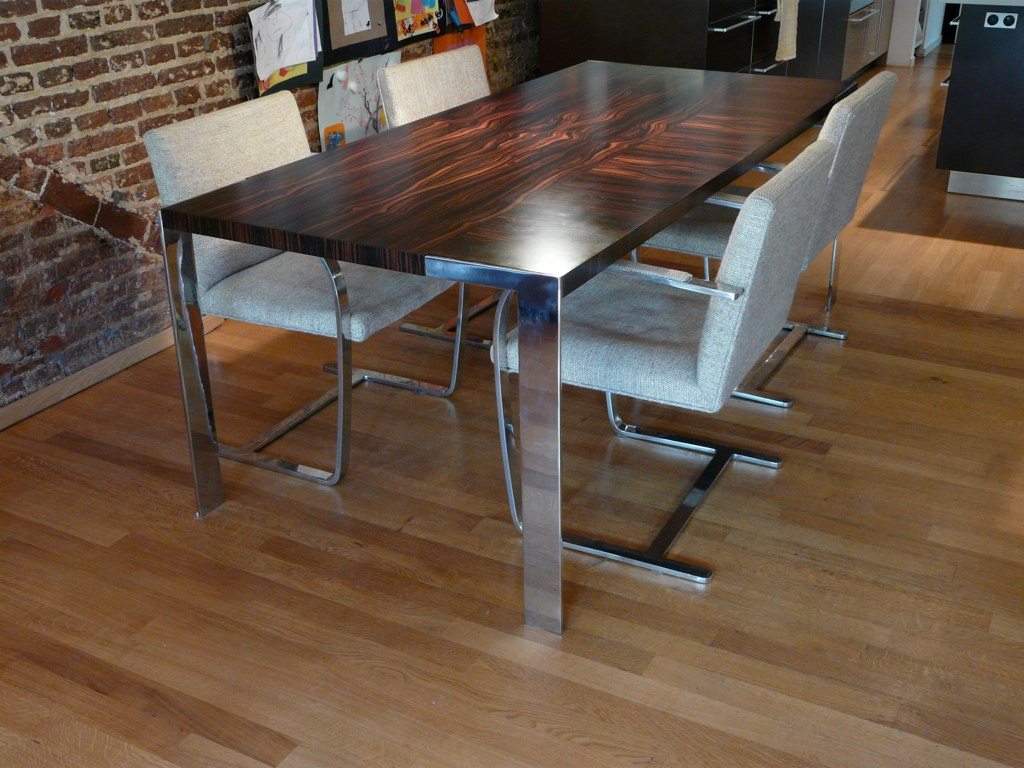Ebony has long been a popular wood, especially for use in musical instruments. The black keys on a piano are traditionally made of ebony, woodwind instruments might be carved out of it and ebony is a favored material for guitar necks and other guitar pieces. Yet this may all change soon, as the various species of ebony trees are almost all on the endangered list, with Mun Ebony from Vietnam and Laos being critically endangered and the export of it and Ceylon Ebony from Sri Lanka being banned.
Quite literally the various species of ebony have been harvested to near extinction by western companies going from country to country, harvesting all they could find. While there are always trees which manage to get overlooked in this process, their number is limited. Today, most of those old growth trees that are harvested are cut by poachers, mostly logging on government protected land.
With these species reaching extinction, it would make sense to plant more of them as an act of reforestation. But the countries where these trees grow have not reached that level of sophistication in their logging industry. Even if they were to start now, it would take a minimum of 50 years for a tree to reach a point where harvesting can be considered and as much as 200 years for the tree to reach maturity.
The wood of the ebony tree is highly prized, going back to the royal courts of the past, mostly because of its extremely dark, almost black color. Brazilian Ebony, one of the few variants still commercially available, is the eighth hardest wood in the world, rating at 3,692 LBF on the Janka scale. The grain of this wood is extremely fine, but due to its hardness may require special tools to work. Even carbide tools will dull rather quickly when working ebony. The only part of the wood that is black or nearly black is the heartwood, with the thick layer of sapwood being a caramel color.
The ebony tree is extremely slow growing, adding to the rarity of this tree. old growth ebony, which produces the finest black ebony, is usually 150 years old or more. There is little of this old growth still available, creating a situation where the majority of the ebony that is harvested today comes from trees that are only 50 years old. The resulting wood from these trees tends to be dark brown, rather than black.
Ebony trees need a hot climate to grow. According to the USDA (US Department of Agriculture) the trees need a growing zone of 10 to 13. That means that it would be possible to grow them in the deep south of Texas, as well as the southern tip of Florida. The trees normally grow solitary, as they need a good 10 hours of sunlight per day. They must be planted where they are not overshadowed, in order to grow.

There is a variant known as the Texas Ebony tree, which is native to Texas and Mexico; perhaps the only exotic hardwood native to the United States. However, this tree produces wood that is more of a chocolate brown, rather than black.
Black wood ebony logs sell at $9,000 per cubic meter. Once processed into blanks usable for musical instruments, the same logs fetch up to $13,000 per cubic meter. Yet most ebony is used in small pieces. Entire pieces of furniture made of ebony are extremely rare and probably antiques. Modern woodworkers who use ebony are more likely to use small pieces for accent, due to the high cost and lack of availability. Even then, one large retailer lists a 2”x 2” x 18” piece of Gaboon Ebony for $83.00.
There are several woods that are used as a substitute for Ebony, including Wenge and African Blackwood. Another option that is used by woodworkers is to use some other fine-grained hardwood and stain or dye the wood with an ebony stain or dye. Due to the amount of pigment that needs to be absorbed, it is best to use an open-grain wood like ash or oak for this. Closed grain woods like maple and birch don’t absorb the stain as readily, making it harder to turn them black.
Some of the best sources for ebony are from sellers of parts and materials for making musical instruments. These pieces will be cut to a size appropriate for musical instruments, which may not be very accommodating to woodworking projects. But since ebony is usually used in small pieces, it should still be workable. Ebony is available in the form of veneer, allowing woodworkers to make their own ebony plywood by laminating the veneer to hardwood plywood. The wood is not generally available as ebony plywood, except in small pieces. Due to coloring variations, it is essential to see what it is that is being purchased, before committing to buying it.



